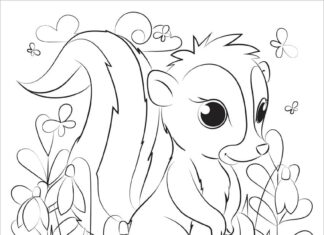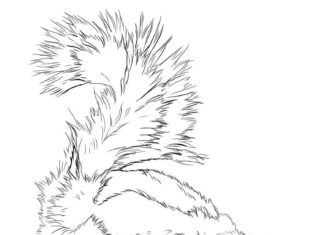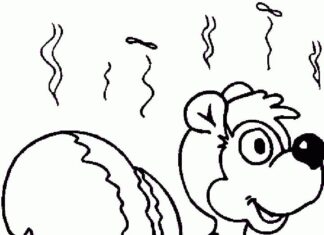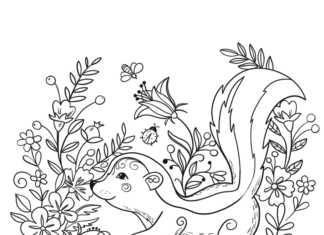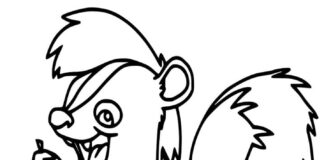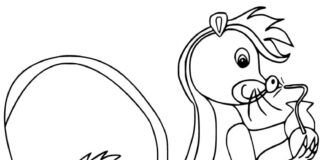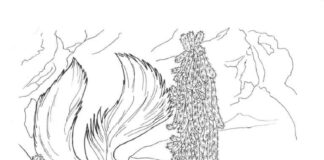Skunks, also known as skunks, are small mammals in the weasel family (Mephitidae) that are known mainly for the distinctive odor they can emit as a defense against predators.
Skunk Coloring Book
information
- Range of occurrence: Skunks are mainly found in North America, although some species can also be found in Central and South America. They are most common in the United States and Canada.
- Physical appearance: Skunks have a distinctive body shape with short legs, a long body and a thick tail. Their fur can come in a variety of colors, such as black, white, brown or gray, often with distinctive stripes or spots.
- Defensive scent: Skunks are known for secreting a stinky defensive liquid known as "skunkspray." This substance is secreted from glands located in the anal area. The odor is very unpleasant and difficult to remove.
- Defense against predators: When skunks feel threatened, they raise their tail and shoot a stinky liquid in the direction of a potential predator. This warning acts as an effective method of deterrence.
- Nocturnal mode of life: Skunks are mainly nocturnal animals. During the day, they usually rest in their hiding places, which may be in hollows, burrows or other shelters, for example.
- Diet: Skunks are food generalists, which means they can eat a wide variety of foods. Their diet can include insects, small vertebrates, fruits, plants and garbage.
- Diversity of species: There are several different species of skunk, with different sizes and appearance characteristics. Some of them are: spotted skunk, mystery skunk, dwarf skunk, Himalayan skunk and others.
- Place in culture: Skunks often appear in folklore and popular culture, especially in cartoons and movies. Characters such as Pepe Le Pew from the Warner Bros. cartoon have become known for their humorous approach to skunk smell.
- Natural predators: Despite their defensive scent, skunks fall prey to predators such as badgers, foxes, eagles and owls.
- Environment: Skunks inhabit a variety of habitats, from rural and suburban areas to forests, clearings, grasslands and shrublands.
trivia
- Colorful patterns: The distinctive stripes and spots on skunks' fur serve a warning function. With these patterns, other animals can recognize them as potentially dangerous and avoid contact.
- Different species, different scents: Different species of skunks can secrete different variants of a reeking defensive liquid. Some smells are more intense than others, and some may even have intoxicating notes.
- Skunk as "cleaners": Skunks can be beneficial in gardens and rural areas because they eat insects that can damage plants.
- Pseudo-aggression: Sometimes skunks adopt a threatening pose, like extending their tail and rising up on their hind paws, even if they have no intention of using their defensive fluid. This is their way of intimidating a potential predator.
- Not just a defense liquid: Although stinky liquid defense is the most well-known way for skunks to defend themselves, they also often try to avoid a fight by fleeing to burrows or hiding places.
- Sense of smell: Skunks have a highly developed sense of smell, which helps them find food and avoid danger.
- Vampire skunk: Sometimes badgers that are closely related to skunks become "skunk vampires." This means that they will eat the skunk's stink glands without harming them, drawing nourishment from them and using them in defense.
- Houses as shelters: Skunks can create their burrows in a variety of places, such as abandoned buildings, piles of wood, cracks in the ground or under houses.
- Different behavior towards people: Although skunks are wild animals and avoid contact with humans, they can become accustomed to their presence over time, especially if they pose no threat to them.
- Robbery frenzy: Skunks sometimes engage in what is known as a "robbery frenzy," meaning that they may enter chicken coops, buildings or other places in search of food. Their stinky defensive liquid can then cause damage and frighten other animals.



